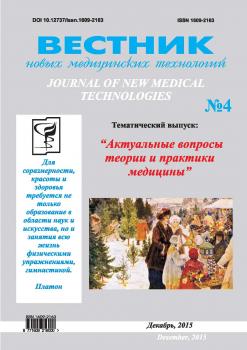Complications, which led to the need of re-operations in the patients with previously correction of congenital septal defects, are analyzed in this paper. Indications for re-operations, their immediate and long term results are considered. Approaches to the problem of the choice of tactics in the case of different complications after initial correction of congenital septal defect of the heart are considered as well. Having diagnosed re-canalization of septal defect requires not always need to re-intervention. The presence of a severe deficiency on the mitral or aortic valve (in particular, the existence of fenestration of the valves of the aortic valve) is almost always an indication for re-operation. Infective endocarditis as one of the significant causes for re-operations is considered in this paper. At the same time, this investigation didn’t reveal a single case of re-operation concerning any severe arhythmias, which required surgical operation. The investigation demonstrates the good immediate and long term results of re-operations in given group of patients. The complications required re-operation after correction of septal defects for more than 15 years didn’t note. This was the result of analysis of mistakes made, and also "the surgeon is an independent" complications.
atrial septal defect, ventrical septal defect, repeated correction, infective endocarditis
1. Burakovskiy V.I., Bokeriya L.A., Bukharin V.A. Serdechno-sosudistaya khirurgiya. M.: Meditsina, 1996. 768 s.
2. Podzolkov V.P. Povtornye operatsii posle kor-rektsii vrozhdennykh porokov serdtsa. Moskva, 2013. 364 s.
3. Cheban V.N. Povtornye operatsii posle korrek-tsii vrozhdennykh porokov serdtsa: Dis. … d-ra med.nauk: 14.00.44. M.: NTsSSKh im. A. N. Bakuleva RAMN, 2003. 304 s.
4. Aeba R. Liberal use of tricuspid valve detachment for transatrial ventricular septal defect closure. Ann. Thorac. Surg. 2003. Vol. 76. P. 1073-1077.
5. Giamberti A. Combined atrial septal defect surgical closure and irrigated radiofrequency ablation in adult patients. Ann. Thorac. Surg. 2006. Vol. 82. P. 1327-1331.
6. Hessling G. Cardiac dysrhythmias in pediatric pa-tients before and 1 year after transcatheter closure of atrial septal defects using the amplatzer septal occluder. Pediatr Cardiol. 2003. Vol. 24. P. 259-262.
7. Kannan B.R. Long-term outcome of patients operated for large ventricular septal defects with increased pulmonary vascular resistance. Indian Heart J. 2003. Vol. 55. P. 161-166.
8. Magnin-Poull I. Mechanisms of right atrial tachycardia occurring late after surgical closure of atrial septal defects. Cardiovasc. Electrophysiol. J. 2005. Vol. 16. P. 681-687.
9. Mavrodius C., Backer S. Pediatric Cardiac Surgery. 3-rd Edition. USA: Mosby, 2003. 889 p.
10. Medeiros A. Permanent rhythm and conduction disorders in patients surgically treated for atrial septal defect. Arch. Inst. Cardiol. Mex. 2000. Vol. 70. P. 46-54.
11. Roos-J. W. Hesselink. Outcome of patients after surgical closure of ventricular septal defect at young age: longitudinal follow-up of 22-34 years. Eur. Heart. J. 2004. Vol. 25. P. 1057-1062.
12. Oliver J.M. Surgical closure of atrial septal defect before or after the age of 25 years. Comparison with the natural history of unoperated patients. Rev. Esp. Cardiol. 2002. Vol. 55. P. 953-961.





